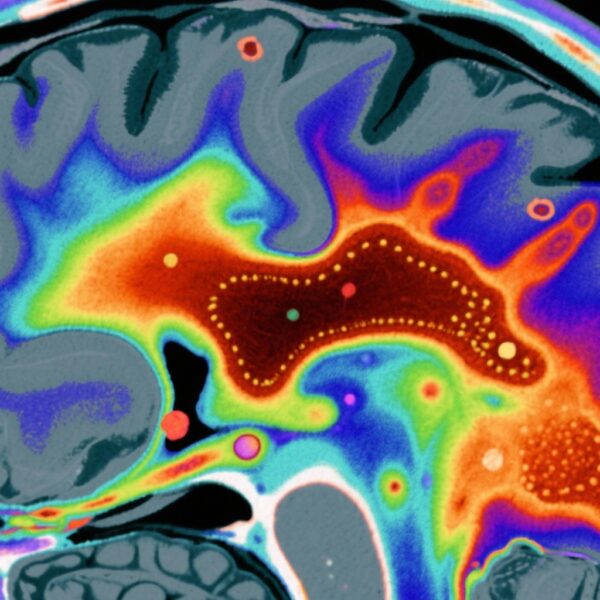Highlight
- Analysis of 58 months postapproval data for esketamine nasal spray in the United States encompassing 1,486,213 outpatient treatment sessions confirms the established safety profile.
- Commonly reported adverse events include sedation (34.7%), dissociation (41.0%), and increased blood pressure (0.9%), consistent with clinical trial observations.
- Serious adverse events occurred in fewer than 0.2% of sessions, with suicide rates below background levels and limited cases of abuse/misuse reported.
- No new safety signals emerged, supporting continued monitoring and use aligned with current product guidelines.
Study Background
Major depressive disorder (MDD) and treatment-resistant depression (TRD) remain significant public health challenges with considerable morbidity and mortality. Esketamine nasal spray, a novel glutamatergic agent targeting the NMDA receptor, received FDA approval in 2019 as an adjunctive treatment for adults with TRD. Given its unique mechanism and potential for adverse neuropsychiatric effects, long-term real-world safety monitoring is essential to validate clinical trial findings and ensure patient safety in routine practice.
Study Design
This observational postmarketing safety study analyzed U.S. data collected from two sources between March 5, 2019, and January 5, 2024: patient monitoring forms submitted to the Esketamine Risk Evaluation and Mitigation Strategy (REMS) program and reports documented in the Janssen U.S. Global Medical Safety (US-GMS) database. The study population included patients receiving outpatient esketamine nasal spray treatment sessions, totaling 58,483 individuals who completed 1,486,213 sessions. Key parameters assessed included patient demographics, dosing patterns, frequency of adverse events of interest—specifically sedation, dissociation, and elevated blood pressure—and incidence of serious adverse events, suicidality, and substance abuse or misuse.
Key Findings
The analysis highlighted that the majority of patients treated were females (61.1%) between 26 and 55 years of age (64.3%). The prevalence of reported sedation was 34.7% across all sessions, and dissociation was noted in 41.0%, while increased blood pressure was reported in only 0.9% of sessions. These adverse events align closely with those documented in preapproval clinical trials.
Serious adverse events (SAEs) following esketamine administration were rare, occurring in fewer than 0.1% of sessions in REMS data and 0.18% in the US-GMS database. Importantly, reported suicide rates remained below expected background rates for this patient population, alleviating concerns about treatment-emergent suicidality. Furthermore, there were 210 cases of reported all-cause abuse or misuse among more than 1.4 million treatment sessions, suggesting low real-world abuse potential.
These findings reaffirm the tolerability and safety profile of esketamine nasal spray when used according to current clinical guidelines and labeling. The frequencies of sedation and dissociation, while common, were consistent with anticipated pharmacodynamic effects and are managed within monitored administration settings. The minimal incidence of serious adverse events and maintained low suicidality rates further underscore the favorable benefit-risk balance.
Expert Commentary
Experts in the field recognize that routine postmarketing surveillance such as this provides critical, large-scale evidence beyond randomized controlled trials, which often have restrictive inclusion criteria. The extensive duration and comprehensive dataset strengthen confidence in esketamine’s safety profile under real-world clinical conditions. Nonetheless, clinicians should continue to monitor for adverse effects and adhere to REMS requirements to mitigate risks, particularly in vulnerable populations.
This study also highlights the importance of multifaceted safety tracking—incorporating both REMS and pharmacovigilance databases—to capture a complete picture of drug safety. While no new safety signals were identified, ongoing vigilance remains imperative given the drug’s novel mechanism and neuropsychiatric effects.
Conclusion
The nearly five-year real-world surveillance of esketamine nasal spray in the U.S. demonstrates a consistent safety profile corroborating clinical trial data. The rates of sedation, dissociation, elevated blood pressure, and serious adverse events are stable and manageable. Furthermore, no novel safety concerns or signals emerged, and incidences of abuse and suicidality remain low. These data support the continued therapeutic use of esketamine within risk mitigation frameworks for patients with treatment-resistant depression.
Future research should focus on longer-term outcomes, comparative effectiveness, and specific subpopulations to refine patient selection and optimize safety measures further. Continued reporting and analysis will ensure that the benefits of esketamine remain firmly balanced against its risks in the clinical setting.
Funding and ClinicalTrials.gov
The study was supported by Janssen Pharmaceutical Companies of Johnson & Johnson, the manufacturer of esketamine nasal spray. No clinical trial registration applies as this is a postmarketing safety surveillance and pharmacovigilance analysis.
References
Sanacora G, Ahmed M, Brown B, Cabrera P, Doherty T, Himedan M, Kern DM, Lim L, Lopena O, Naranjo RR Jr, Nuamah I, Sarayani A, Turkoz I, Bowrey HE. Real-World Safety of Esketamine Nasal Spray: A Comprehensive Analysis Almost 5 Years After First Approval. Am J Psychiatry. 2025 Oct 1;182(10):913-921. doi: 10.1176/appi.ajp.20240655. Epub 2025 Sep 10. PMID: 40926574.



